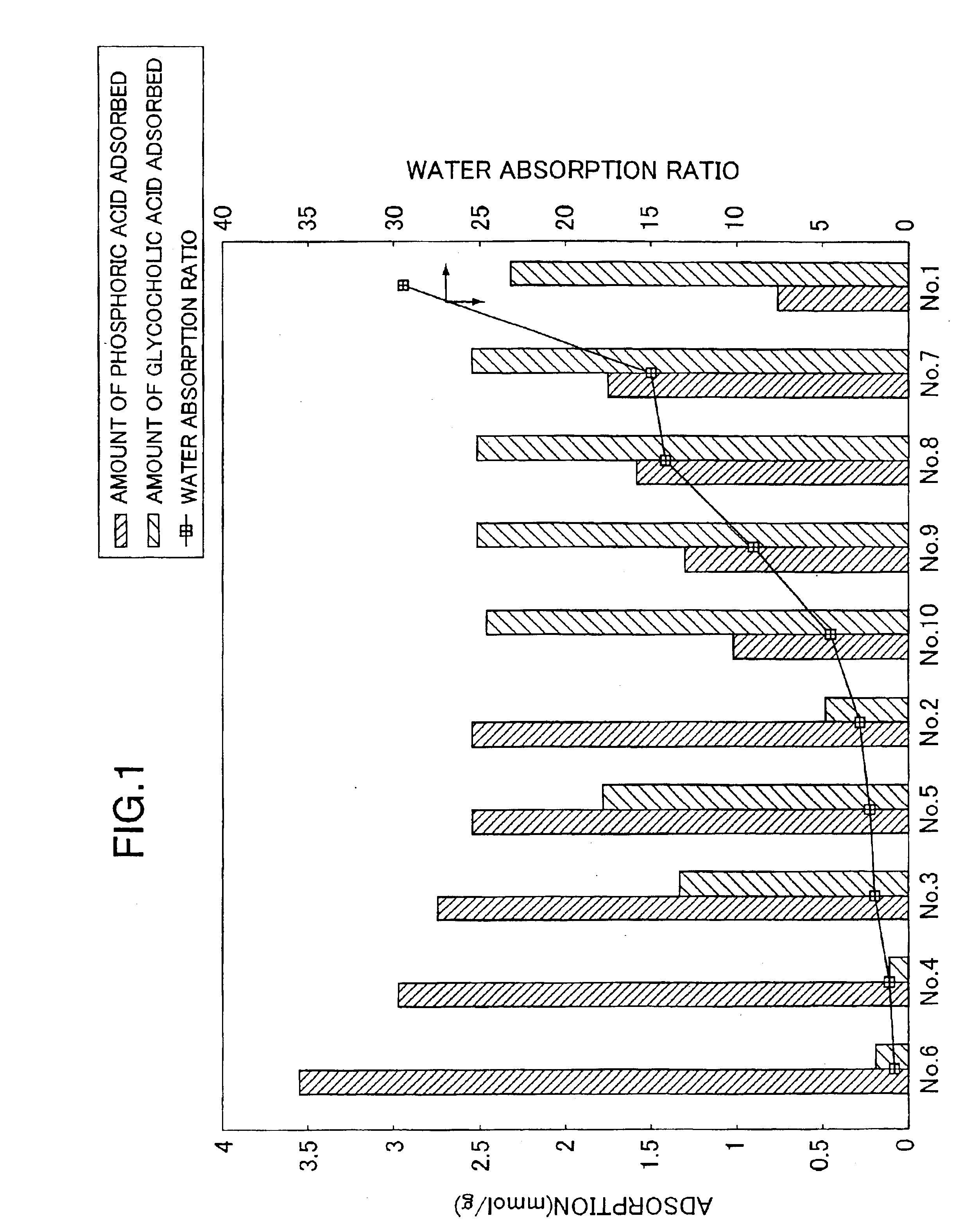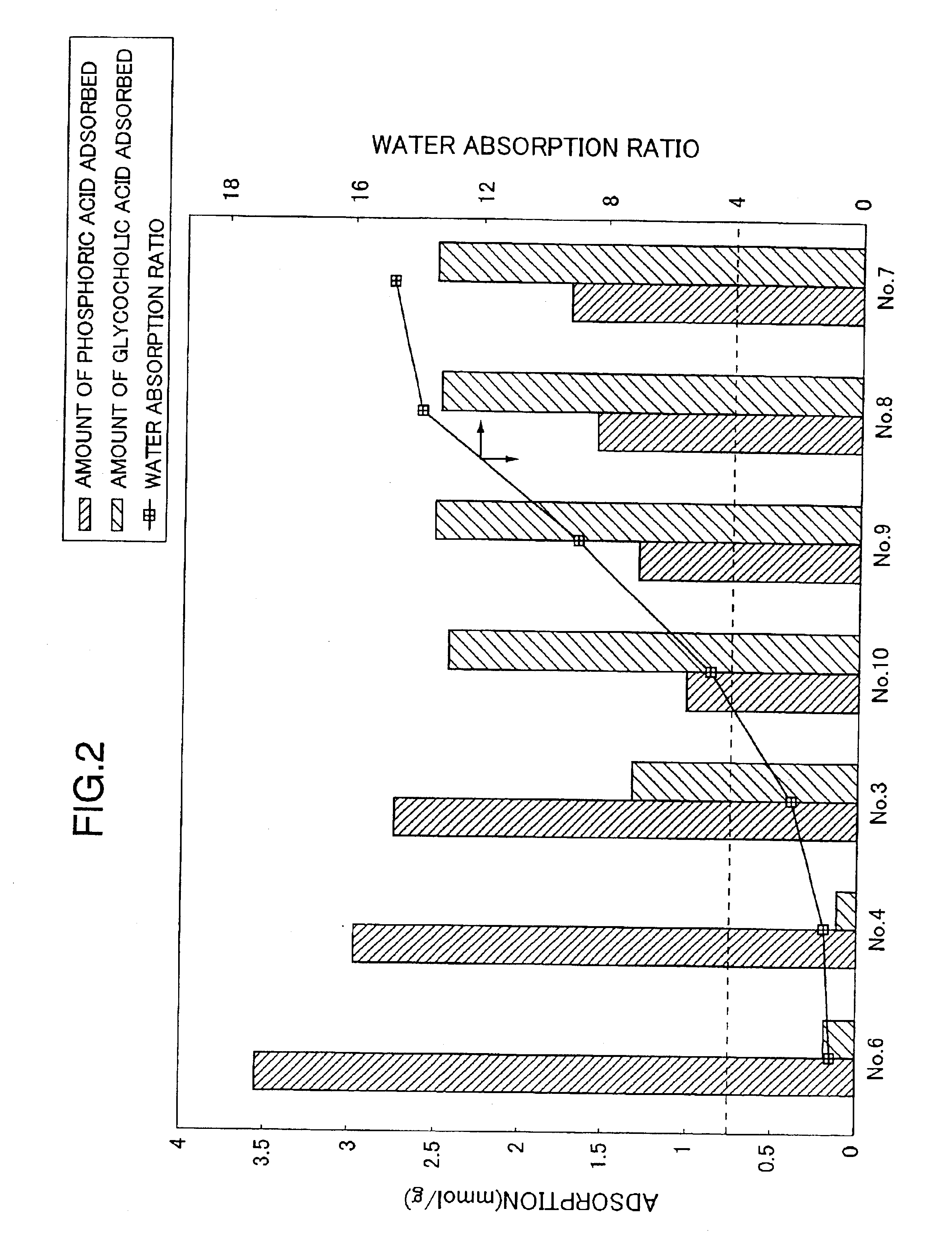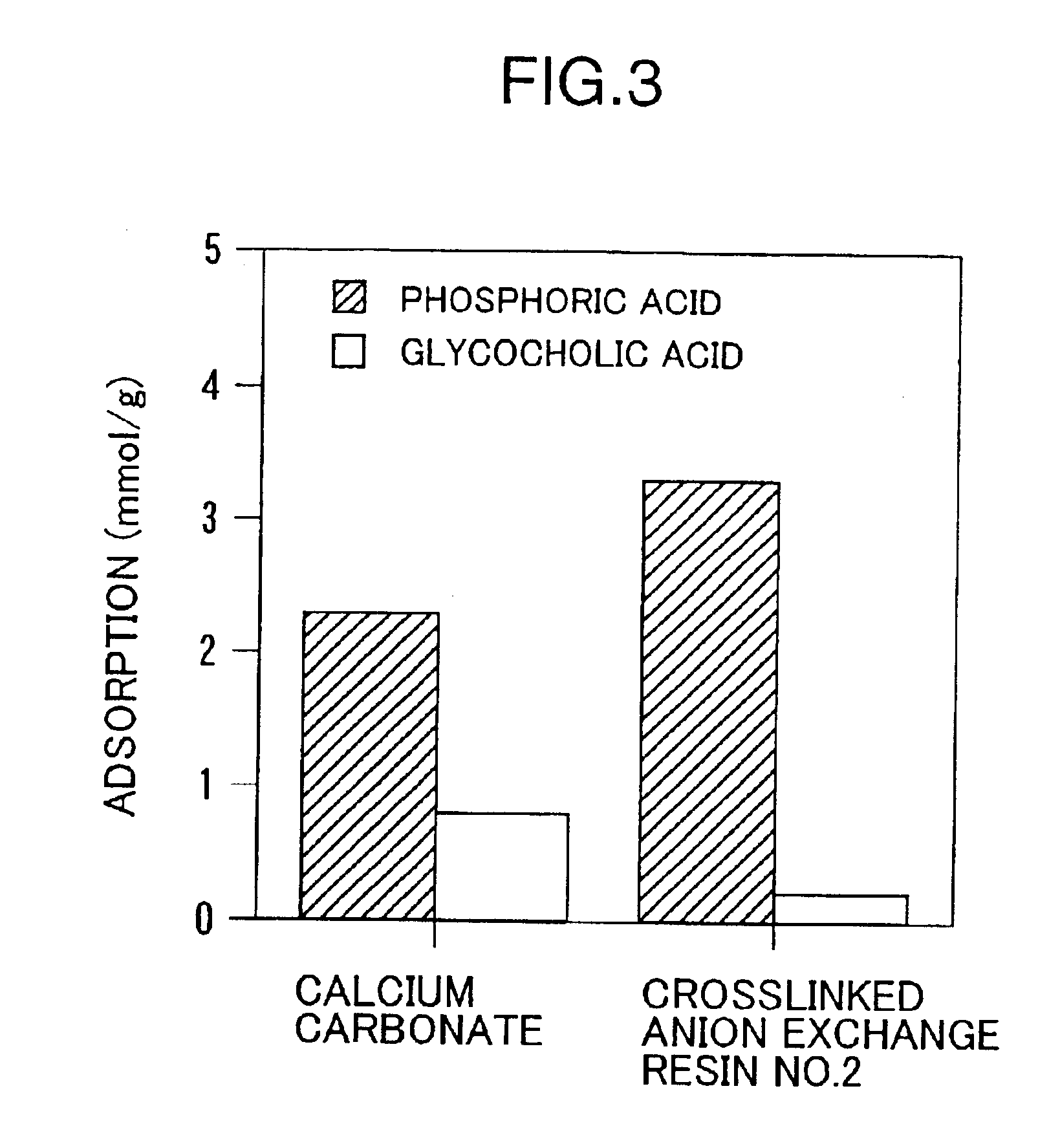Crosslinked anion-exchange resin or salt thereof and phosphorus adsorbent comprising the same
a crosslinked anion exchange resin and phosphorus adsorbent technology, applied in the direction of cation exchanger materials, other chemical processes, metabolism disorders, etc., can solve the problems of increasing calcium uptake, increasing the amount of calcium, and losing the ability of renal dysfunction to excrete phosphorus in the body, etc., to achieve selectivity to phosphorus. , excellent phosphorus adsorption capacity
- Summary
- Abstract
- Description
- Claims
- Application Information
AI Technical Summary
Benefits of technology
Problems solved by technology
Method used
Image
Examples
experimental example 1 (preparative example 1)
Into a 500 ml separable flask containing 100.0 g of polyethyleneimine (“EPOMIN SP-006”; number averaged molecular weight 600; amine value 20 mg eq / g-polymer; Nippon Shokubai Co., Ltd.) was added dropwise while stirring at 30° C. under a nitrogen atmosphere, 17.7 g of methyl acrylate (8.8 mol % with respect to the total moles of amino groups and / or imino groups in polyethyleneimine) over a period of 3 hours (mainly the Michael addition reaction proceeded). After the dropwise addition, the mixture was heated to 70° C. and stirred for 2.5 hours to promote the reaction (an amide-bond forming reaction). After confirming the mixture being gelated (by the progress of crosslinking), the mixture was cooled to 30° C. and cured at the same temperature for 15 hours. The mixture was separated from the separable flask and cured for additional 1 month at room temperature.
The crosslinked anion exchange resin thus obtained was crushed and poured into 778 ml of 3N aqueous hydrochloric acid solution a...
experimental example 2 (preparative example 2)
According to the procedure described in EXPERIMENTAL EXAMPLE 1 except that 44.3 g of methyl acrylate (22.1 mol % with respect to the total moles of amino groups and / or imino groups in the following polyethyleneimine) was added dropwise into a 500 ml separable flask containing 100.0 g of polyethyleneimine same as that used in EXPERIMENTAL EXAMPLE 1, “EPOMIN SP-006”, the Michael addition, amide-bond forming and curing reactions were conducted. The crosslinked anion exchange resin thus obtained was crushed and poured into 664 ml of 3N aqueous hydrochloric acid solution and the resulting mixture was stirred for 24 hours. The crosslinked anion exchange resin hydrochloride obtained was collected by filtration. The filtered resin was washed repeatedly with water, and then poured into 10 L of water and the mixture was stirred for 24 hours. The filtered resin was collected by filtration and lyophilized to yield crosslinked anion exchange resin No. 2.
experimental example 3 (prepartive example 3)
Into a 500 ml separable flask containing 50.0 g of polyethyleneimine (“EPOMIN SP-018”; number averaged molecular weight 1800; amine value 19 mg eq / g-polymer; Nippon Shokubai Co., Ltd.), was added, dropwise while stirring at 2° C. or lower under a nitrogen atmosphere, 10.8 g of epichlorohydrin (10.0 mol % with respect to the total moles of amino groups and / or imino groups in polyethyleneimine), and the mixture was stirred for additional 2 hours. After the stirring was terminated, the mixture was heated to 30° C. and reacted for 1.5 hours and at 50° C. for additional 1 hour. After confirming the mixture being gelated, the mixture was further heated to 60° C. and reacted for additional 1 hour. After the reaction was completed, the mixture was cured at 70° C. for 24 hours. The crosslinked anion exchange resin thus obtained was crushed and poured into 384 ml of 3N aqueous hydrochloric acid solution and the resulting mixture was stirred for 24 hours. The crosslinked anion exchange resin h...
PUM
| Property | Measurement | Unit |
|---|---|---|
| Mass | aaaaa | aaaaa |
| Molality | aaaaa | aaaaa |
| Molality | aaaaa | aaaaa |
Abstract
Description
Claims
Application Information
 Login to View More
Login to View More - R&D
- Intellectual Property
- Life Sciences
- Materials
- Tech Scout
- Unparalleled Data Quality
- Higher Quality Content
- 60% Fewer Hallucinations
Browse by: Latest US Patents, China's latest patents, Technical Efficacy Thesaurus, Application Domain, Technology Topic, Popular Technical Reports.
© 2025 PatSnap. All rights reserved.Legal|Privacy policy|Modern Slavery Act Transparency Statement|Sitemap|About US| Contact US: help@patsnap.com



